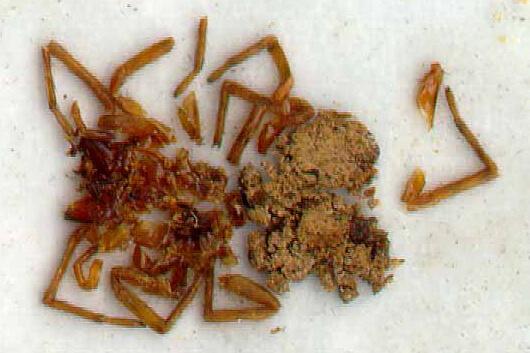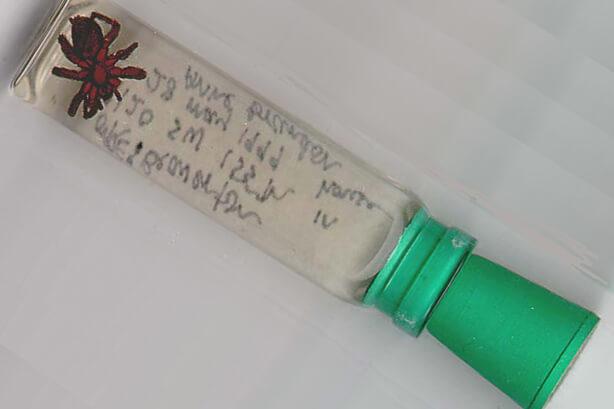Myth: Spider specimens submitted for identification can be mailed like a letter in a common envelope.
Fact: Believe it or not, people actually do this. A little reflection should lead anyone to realize that letters in envelopes, even padded or cardboard ones, go through heavy-duty canceling machines in the post office, and any spider that is not protected in a rigid box or bottle will be crushed to powder. Powdered spiders are seldom identifiable!
It is best to preserve spiders in a non-leaky container of rubbing alcohol before they have dried out. (Do not use formalin, which is not a preservative for spiders). Dried spiders are far from ideal for identification purposes, but in case of need they should be packed with soft tissue paper (so they won't rattle around) in a rigid box or other container.



